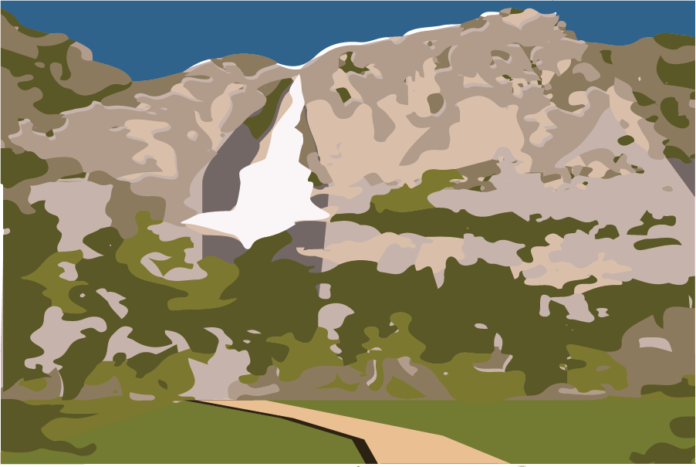“Accessibility” often feels like an obvious reason to develop roads on public land — but isn’t quite as straightforward as we think
Yosemite Valley is more of a small city than a wilderness these days. The seven-square-mile valley sees more than 4 million visitors annually and houses over 2,000 seasonal employees; it has five lodges and hotels, and the park website warns against hours-long waits getting around the valley by car during the summer.
The numbers alone tell a story that stands in stark contrast to John Muir’s 1899 description of the area: “Nearly all the park is a profound solitude. Yet it is full of charming company, full of God’s thoughts, a place of peace and safety amid the most exalted grandeur and eager enthusiastic action, a new song […] with sermons in stones, storms, trees, flowers, and animals brimful of humanity.”
The writing and activism of Muir and others has brought the Valley both national protections and international fame, making it one of the most visited national parks in the U.S. and a prime example of one of the biggest dilemmas the park system faces: how to simultaneously manage, protect and share the land. A huge part of this dilemma is the question of access.
“Accessibility” is something of a buzzword, popping up in debates about how to use and develop public land in ways that are hard to argue with. Besides allowing companies like DNC Parks & Resorts, the hotel company that does business in Yosemite Valley, to profit, developing roads and trails allows a far wider range of people to access preserved areas than keeping the areas totally wild. This encourages people to engage with and care about our public land, and it’s intuitive that people are more willing to fight to protect land when they have a personal connection to it. Similarly, it’s ridiculous to argue that only people who are physically fit and able have the right to access public land, which is often understood as the practical outcome of not developing parks for easy viewing.
There are ways, however, to increase citizen access without building infrastructure.
Last summer, I worked for a company called Splore, which is based out of Moab, Utah, and takes people with disabilities rafting on the Colorado and Green Rivers. The company has been around since the ‘70s, and some of the trips that Splore offers wind through truly remote areas. This means sometimes putting people with severely limited mobility on class 3 or 4 rapids in the backcountry, where rescue is complicated. To some people, that sounds irresponsible. Maybe it is. But on one of the first trips I worked, there was a man with paraplegia whose favorite part of the day was the biggest rapid. His ear-to-ear grin made me wonder how much “accessibility” is wrapped up in tightly-held beliefs that people with disabilities “shouldn’t” put themselves in danger or make themselves uncomfortable. Since when was rafting supposed to be safe or comfortable for anyone? How often does the argument that we need these things for “certain populations” really underestimate the people who fall under those labels?
One of my biggest takeaways from the experience was the realization that “accessibility” is much more nuanced than we give it credit for. People don’t need a road to walk or roll on; they need the support of people who have the knowledge, skills and sometimes technology necessary to safely navigate wild spaces. These skills and support systems can be actively invested in and maintained to give people access, rather than relegating people without the knowledge to read a trail map or the ability to navigate a trail in their everyday wheelchair to the sidewalk.
It’s true that some disabilities can add more discomfort or danger to backcountry endeavors than is reasonable. But when it comes to natural spaces, building infrastructure fundamentally changes what you are preserving. The idea that building infrastructure makes those quiet, remote, peaceful places “accessible” is a misrepresentation. Rather than increasing access to remote areas, infrastructure just makes places into not the backcountry, and often discourages people from stepping outside of it.
There’s a balance to be struck. I don’t think a mistake was made in developing Yosemite Valley — the role the Valley plays in our world as it is now is a good one, bringing love and publicity to the park system. But the quiet liveliness of the Valley as Muir experienced it is gone. It’s been destroyed, if you want to be dark and honest about it. I’m not saying it’s a “bad” thing; I’m saying we have to make sure there are still quiet, profound places in the world, and make sure to both protect them by not allowing them to be built over and share them as best we can with anyone who wants to see them.
Written by: Anna Kristina — akmoseid@ucdavis.edu
Disclaimer: The views and opinions expressed by individual columnists belong to the columnists alone and do not necessarily indicate the views and opinions held by The California Aggie.




